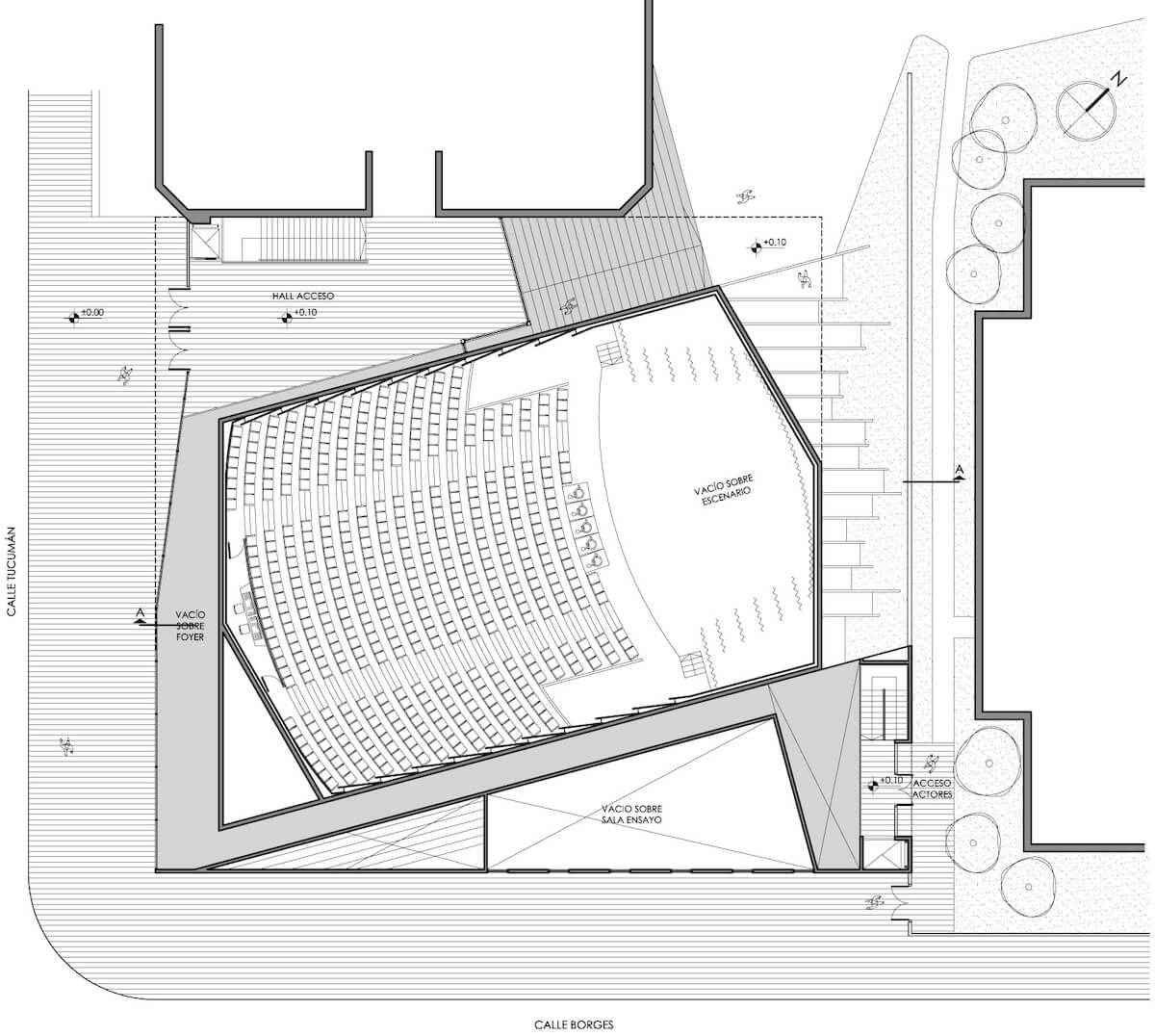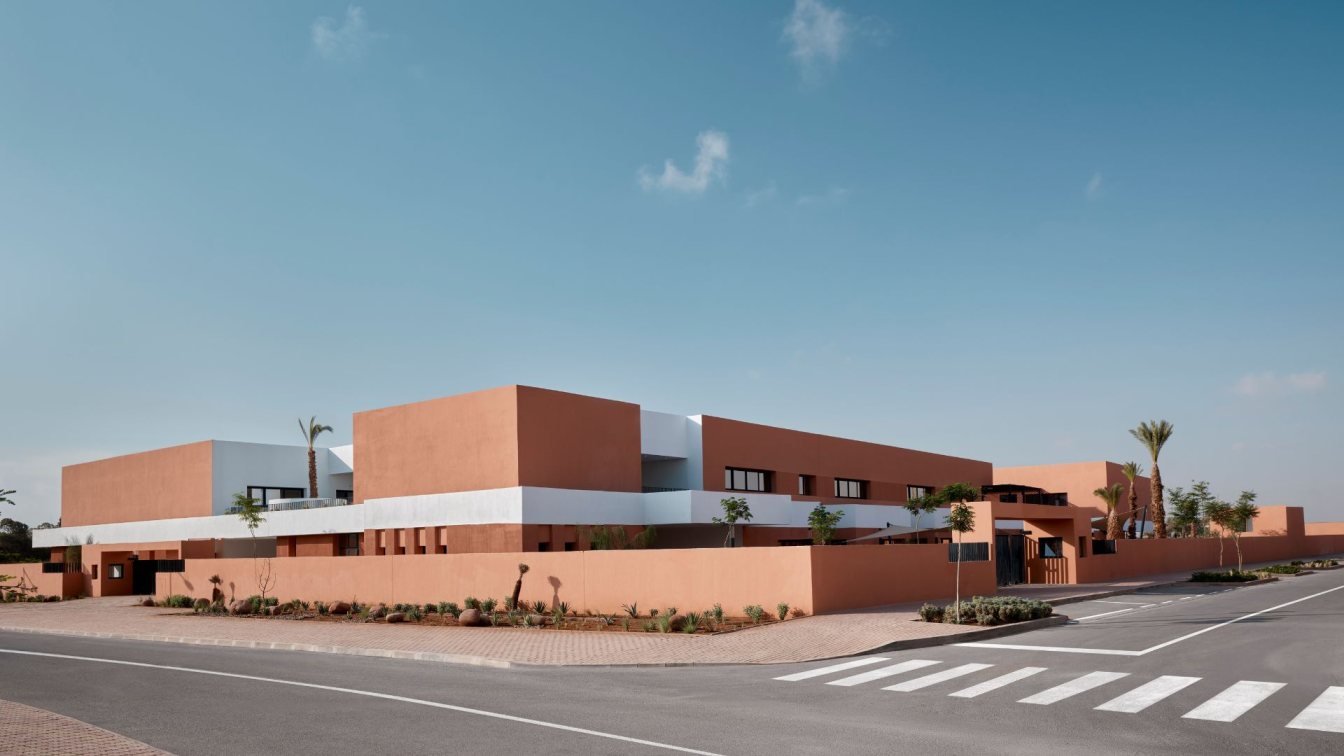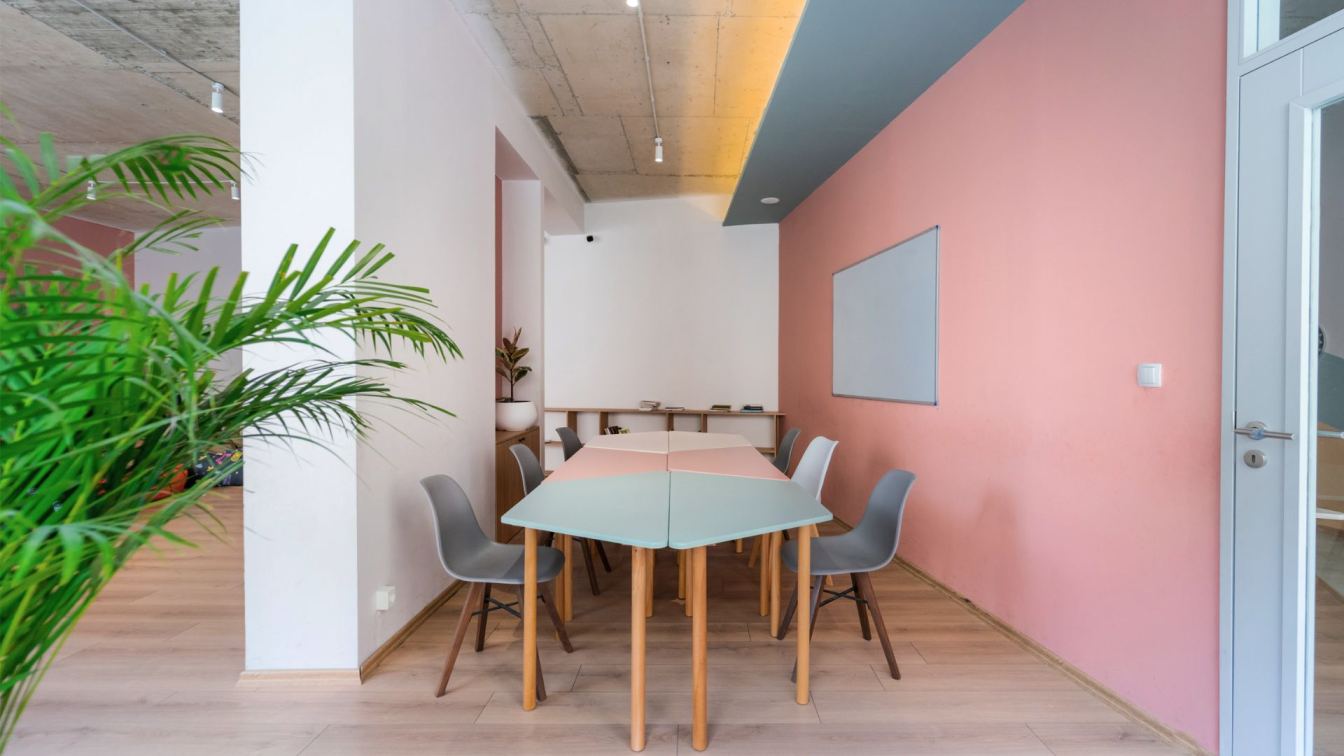The Northlands School new Concert Hall is located at the intersection of Borges and Tucumán streets, in one of the two blocks that the school has in Olivos, Province of Buenos Aires. It has a covered area of approximately 1700 square meters and capacity for more than 500 people. The project was the Biennial Architecture Award under the Private Equipment category at the Buenos Aires International Architecture Biennial 2022.
MZM studio (Maletti Zanel Maletti arquitectos) won the First Prize of the competition with the idea of “theater + amphitheater”, which was particularly valued by the jury. One of the greatest values of the block, where the new building had to be located, is its Interior Garden. A green lung defined by the old buildings, with trees and a gazebo that make this site one of the most valuable in the complex. The new building is presented as an extension of this central space of the block since it generates a recreational path on its roofs that culminates with an open-air amphitheater. This exterior walkway, which was called “green helix” in the conceptual stage, is an ascending path that starts in the lung of the block and goes around the main hall. With a gentle slope, due to its almost 120 meters in length, it culminates in one of the most important spaces of the proposal, the amphitheater. The entire roofs of the new building are usable, increasing the green areas of the block by almost 40%.
The structure is the expression of architecture and it is resolved with the minimum amount of elements to define and support both the hall and the ascending walkway. There is no concrete element that does not strictly fulfill a support function. 100% of the composition elements have a structural function. The geometry of the project is articulated between the position and rotation of the hall within the orthogonality of the void. It takes a centralized position to give rise to the maximum possible development of the ascending walkway that surrounds it with the aim of attenuating the slopes. It also adopts a 23° rotation to generate spatial tensions with the walkway and allow circulation below the inclined planes of the Hall’s slab. The geometric aspects of the inclined planes that will give rise to both the floor of the hall and its cover, which must also be inclined to generate the amphitheater, are added to these geometric aspects. In this way, the only orthogonal planes of the proposal are those that recompose the urban space.

Although the client’s explicit request was to have an architectural piece that stands out within the complex, there are two major gestures that ensure its correct urban insertion. The first is the decision to put practically the entire program underground. In this way, the impact that the important volume of the Hall could cause in the neighborhood is significantly reduced. The other major decision has to do with the setbacks on the municipal line. The project has two setbacks. The first, three meters above both streets, is mandatory and is where the green walkway is supported, generating a kind of ascending base of low height that takes the scale of the neighborhood. Voluntarily, the project takes the maximum height allowed in a second setback with variable distances towards the street, providing an interesting effect of volumetric staggerings.
The program for the Brightman Hall includes a Violin Concert Hall for no less than 500 people, a Foyer with cloakroom and restrooms for the public, a Rehearsal Room, and a Backstage with Dressing Rooms and restrooms for actors with differentiated accesses. All support functions for the Hall are developed below the walkway that revolves around it.
The Institutional access for the public is given on Tucumán Street on the ground floor to a reception that overlooks the Foyer in the basement, which can be reached by a wide staircase and an elevator. Once in the Foyer, the public enters the Hall at the same level and can then go up to the rows through their own slope. On the other hand, actors and services have their own access on Borges Street, where a small hall leads them to the lower floor to access the Backstage and Rehearsal Room, both at the same level as the stage. Another important access is that of the students, which is given directly in the basement through a large staircase that connects with the central space of the block. The foyer also has two connections with the existing Art & Sciences building, both on the ground floor and in the basement.
The Hall is a multifunctional auditorium with a capacity for 512 people and was designed for concerts, contemporary music, choirs, and prose (spoken theater), among other things. Its geometry, volume, the characteristics of its interior epidermis, and its slope were carefully studied to obtain the desired acoustics and isotopes. Its curved rows, parallel to the geometry of the proscenium, were designed to optimize the number and position of spectators. At the top, it has a sector for audio and video consoles integrated into the Hall. It also has an exit at the top that connects with the top of the outdoor amphitheater.

The Rehearsal Room This room is acoustically conditioned and has the same surface area as the main hall stage, making it possible to rehearse complete works. This room has a main access from the Foyer and another from the Backstage. On event days, it can be integrated into the backstage, significantly increasing its surface area.
The Foyer This space is the great articulator of the project and, due to its dimensions and geometry, one of the most important spaces in the complex. It is developed on the basement and ground floor. It connects the Hall with the street and the school gardens and has visual contact with the walkway that leads to the amphitheater. Despite being in a basement, it has abundant natural light injected through the vertical skylights that overlook Tucumán Street and the green walkway. The inclined plane, which is the floor of the Hall, has a perforated wood cladding that gives it warmth and acoustically conditions this space.
The technical resolution of the project was possibly the greatest intellectual effort of the MZM study during the process, with the aim of maintaining formal synthesis. The coordination between architecture and engineering was carried out and verified through a three-dimensional model with BIM methodology (Building Information Modeling). Due to the complex geometry of the project, building a digital model allowed for verified documentation to be obtained for the structure and thermomechanics, especially for the work. Thermal needs have been covered by installing a central air conditioning system of the VRV (Variable Refrigerant Volume) cold/hot type by Heat Pump, integrated with Central Air Treatment Units for the Auditorium-Stage and Foyer, and with Individual Evaporative Units in Rehearsal Room and Dressing Rooms.
Air injection into the Auditorium was carried out by means of high induction step diffusers, installed under each seat, entering the treated air at very low speed from a buried plenum, completely eliminating possible system noises and at the same time providing the necessary comfort levels.
All the concepts described had, throughout the design process, the final objective in mind: to promote meeting and exchange among people and stimulate creativity.































